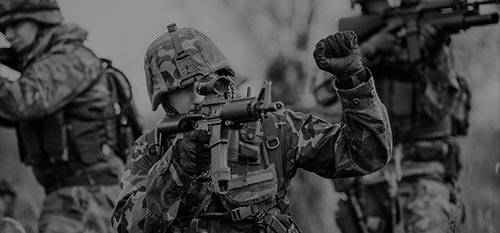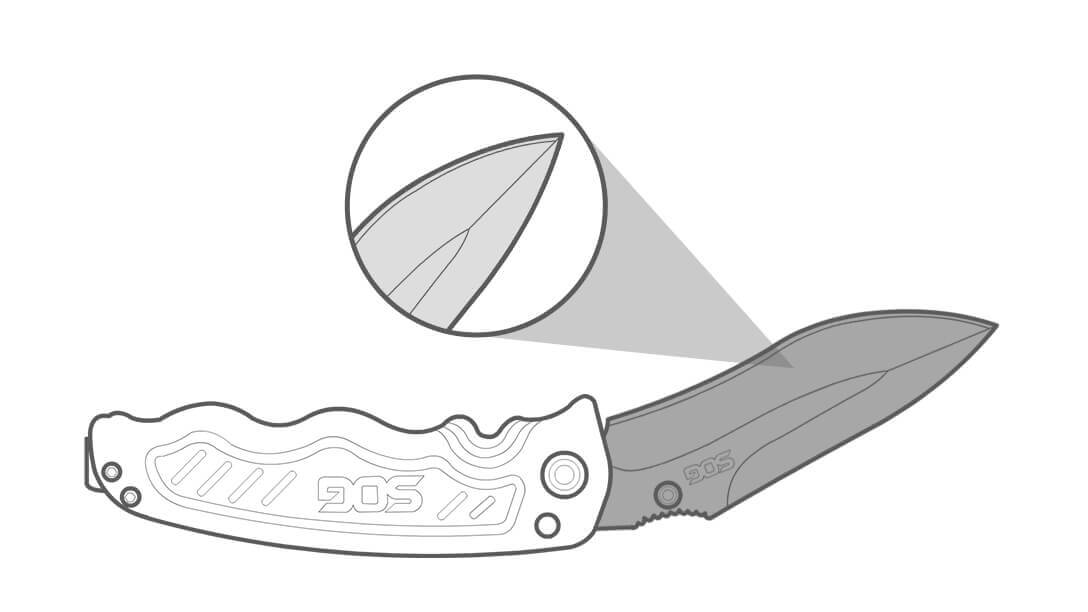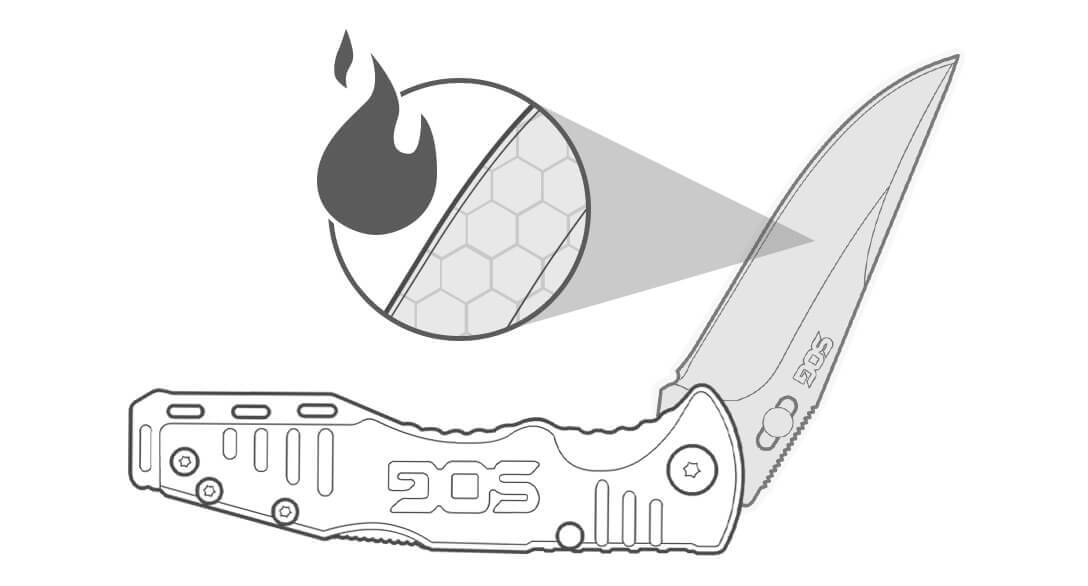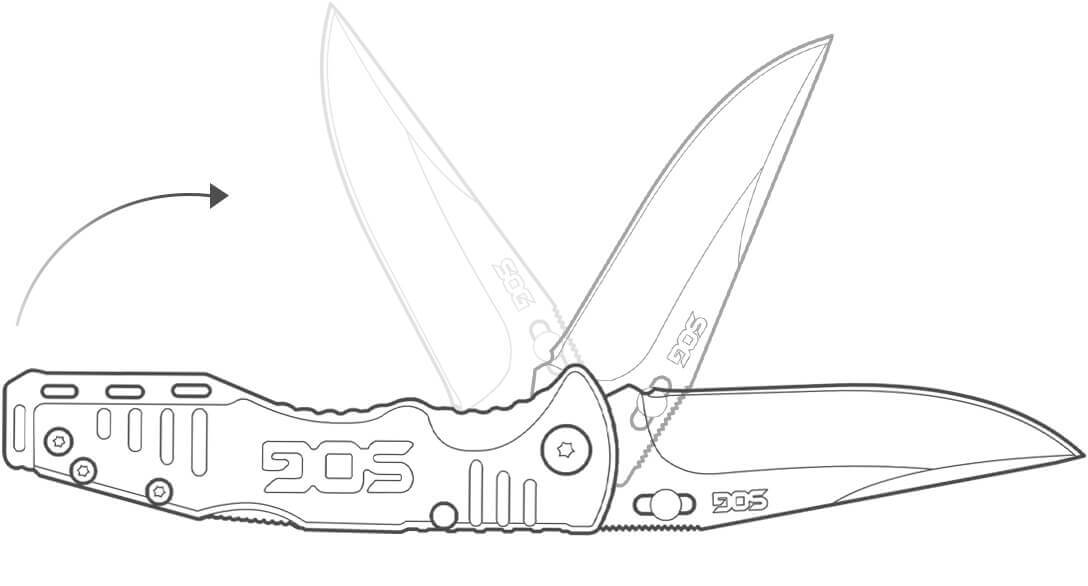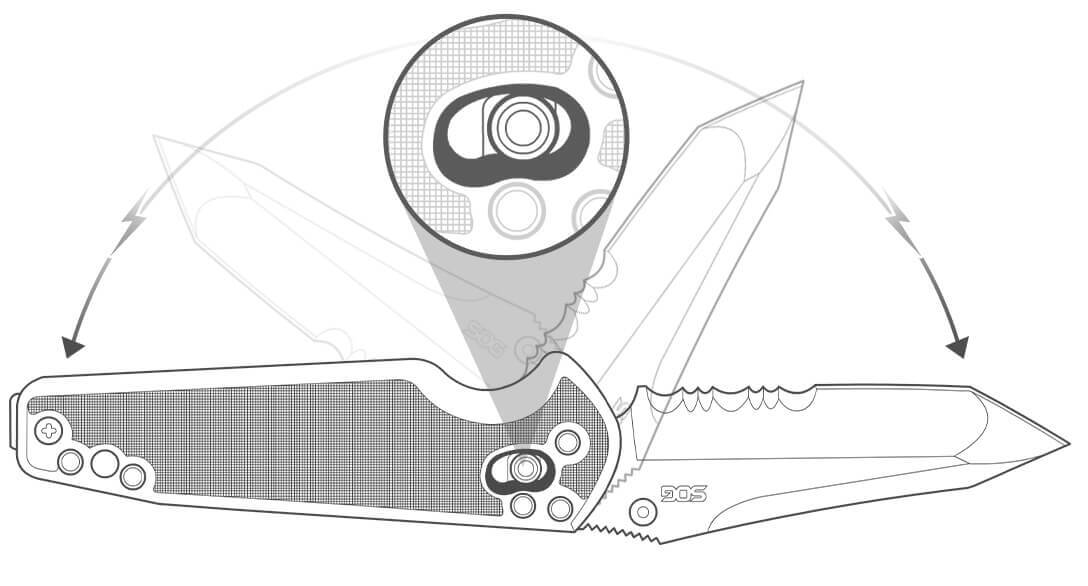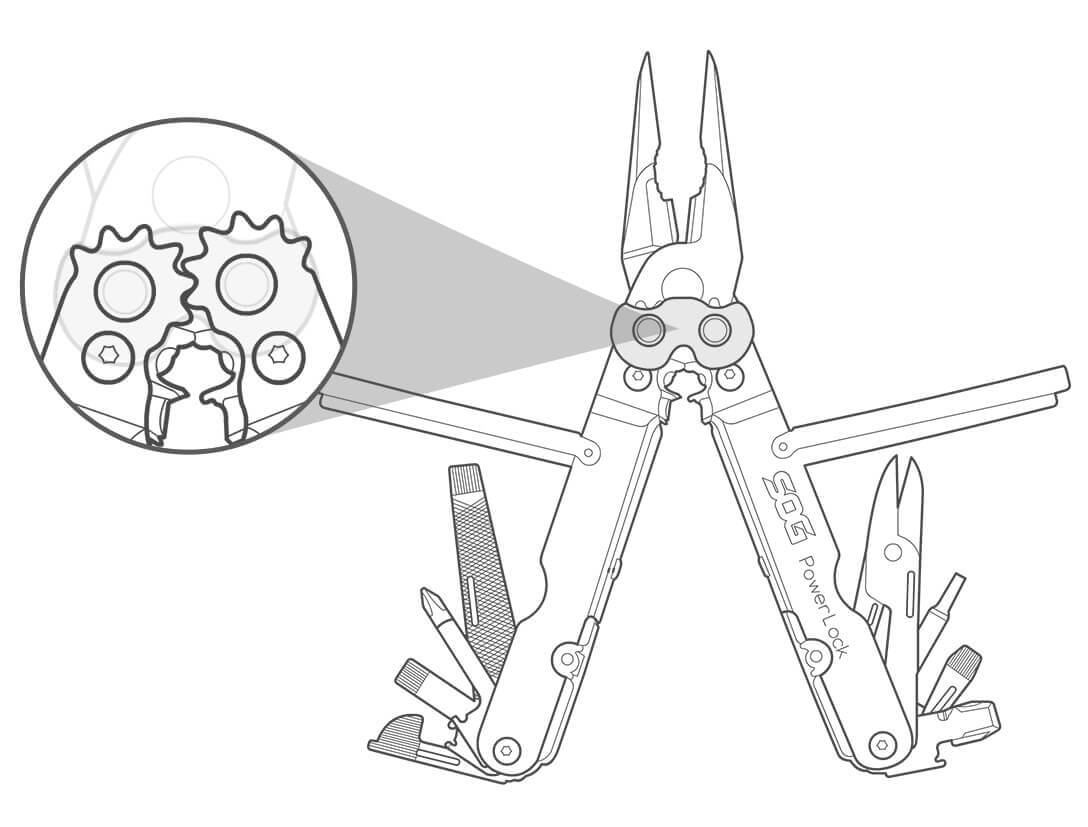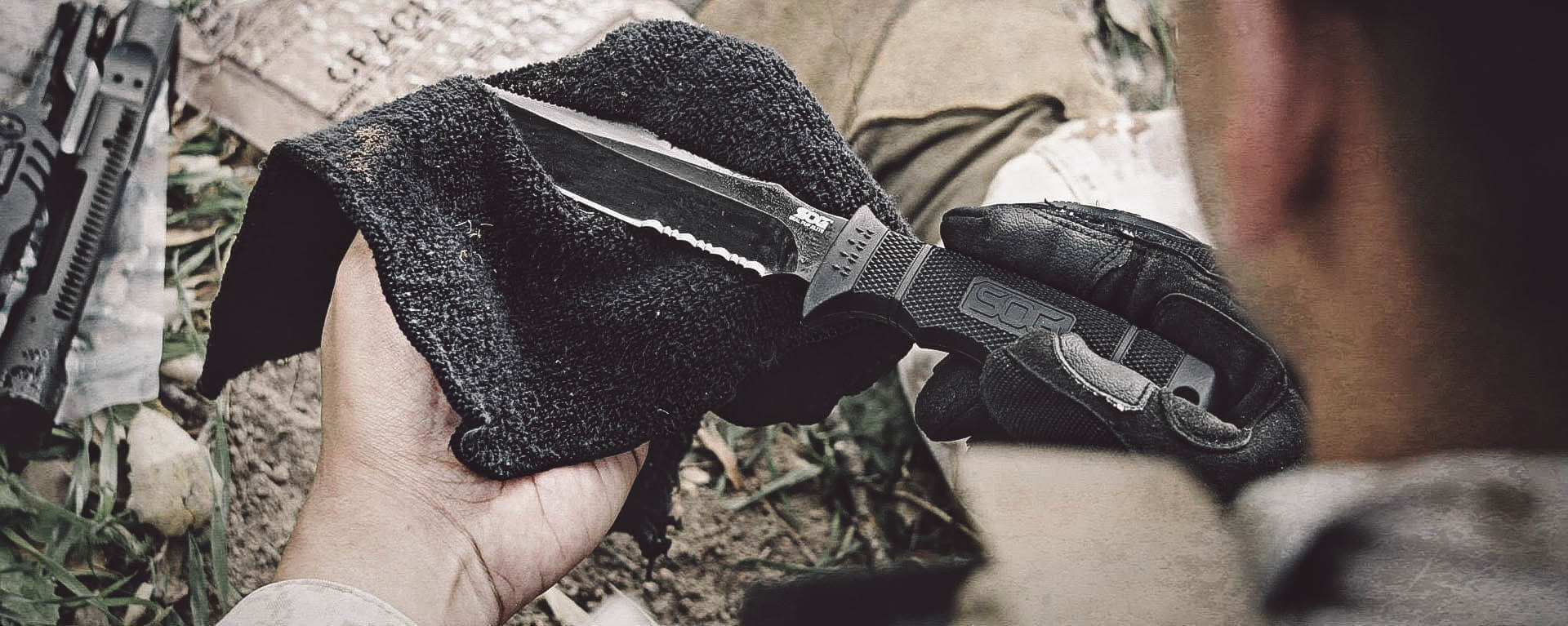
KNIFE BUYER'S GUIDE
From your front door into the field - all the way to the front lines - the best knife is the one you carry. The trick is, knowing exactly what kind of knife best suits your needs. From size to blade type, to folding or fixed, there are multiple factors to consider when selecting a knife. But the bottom line is: you should choose a knife that fits your hand, your personality, and your pocket book (always in that order). And remember, no single knife is intended to suit every need. In fact, many of our customers carry multiple knives and tools for that very reason. Whichever knife you decide is best for you, please be sure to use it carefully, responsibly, and often.

- A
-
EDGE
The sharpened part of the blade, from point to bolster (E to F). The edge can be straight, serrated, or a combination of the two.
- B
-
SPINE
The side opposite the sharpened edge.
- C
-
HANDLE
The handle envelops the tang (H) and is usually fastened by rivets or encased in plastic or metal.
- D
-
TIP
The third of a blade's tapered end, opposite the handle.
- E
-
Point
The very tip of the knife, the point should be sharp and relatively thin. It is used for making incisions, cutting, and carving.
- F
-
Bolster/Guard
The thick piece of metal between the handle and blade. Typically found on fixed blade knives, the Bolster/Guard serves several purposes, adding weight, providing balance, and creating a comfortable resting place in the hand.
- G
-
Butt or Pommel
The end of a knife is located at the end of the handle, opposite the tip.
- H
-
Tang (not pictured)
The part of the blade that runs from the bolster back into the handle (a full tang runs the entire length of the handle, while a half-tang only runs a part way).
Blade Steel Types
There is a saying: The heart of a knife is its steel. While steel certainly is very important, it is not the only factor in determining the performance of a knife (other considerations being heat treatment and blade shape/profile). The level of steel quality varies greatly from knife to knife. Most modern knives, however, are made using stainless steel (a steel alloy with a minimum of 11% chromium content by mass). By varying the amount of chromium and carbon in the makeup of the steel, different properties are achieved.
Some basic information on steel grades and characteristics:
Good
These entry-level, rust-resistant stainless steels are typically made in Asia and offer good value. Compared to higher grades, they tend to be softer and require more frequent sharpening to maintain the best performance, but do adequately hold an edge.
Examples: 420, 440A, 7Cr13MoV
Better
Better grade stainless steels contain higher chromium content, making them more expensive. With greater edge holding ability, these steels require less maintenance than entry-level grades of steel. Sharpening is also relatively easy and can be performed using appropriate techniques. A great combination of value and performance, knives made of these steels are perfect for everyday use.
Examples: AUS6, AUS8, 440C, 8Cr13MoV
Best
Typically made in the USA and Japan, the best stainless steels come with a cost premium, due to their high chromium content. Additional elements, such as vanadium, are often added to provide superior edge sharpness and retention, as well as enhanced rust resistance. These steels are ideal for more demanding uses.
Examples: CPM 154, S30V, VG-10
Steel Type Properties
AUS-8 and AUS-6 are high-grade chromium Japanese steels that boast a good balance of toughness and strength, edge holding ability, corrosion resistance, and cost. Typical Rockwell hardness is 56-58.
440A and 440C are high-grade cutlery steels that are very similar to AUS above. The 440A contains the least amount of carbon and is more stain-resistant than 440C, which contains the most carbon and is typically harder. Many knives are made of 440 stainless, due to its toughness and relatively low cost.
VG-10 is a well-known, high-end Japanese steel, and is considered premium. It contains vanadium, which is renowned for its toughness. The steel is specially designed for high-quality blades used in cutlery. VG-10 can be sharpened to a fine edge that is very durable and can maintain a hardness of Rc 60 without becoming brittle.
CPM S30V is a powder-made stainless steel developed by Crucible Materials Corporation for its wear and corrosion resistance. Considered to be one of the superior steels ever made, its chemistry promotes the formation and even distribution of vanadium carbides, which are harder and more effective at cutting than chromium carbides. In addition, vanadium carbides give the steel a very refined grain, which further contributes to the sharpness and toughness of its edge.
154CM is an American-made premium grade stainless steel, originally developed for tough industrial applications. It combines three principal elements: carbon, chromium, and molybdenum. Known for its best all-around qualities, it offers great corrosion resistance with good toughness and edge quality. Typical Rockwell hardness is 57-59.
D2 is a high-performance tool steel alloy commonly used in knives and tools. It is not considered stainless steel, as its chromium content is one percent less than the required classification.
8Cr13MoV is a Chinese stainless steel with a high performance-to-cost ratio, often compared to AUS-8. Tempered around the Rc56 to Rc58 range.
san mai means layered steel. It contains a very hardcore steel that is encased in softer, more resilient outer layers (there are many combinations of steel used in san mai). Its greatest advantage is that it gives a blade an extremely hard edge, while maintaining flexibility.
Handle Materials

-
Glass Reinforced Nylon (GRN)
Glass Reinforced Nylon (GRN) is a high-strength, abrasion, and impact resistant thermoplastic polyamide formulation of the family more commonly known as nylon, often with varying degrees of fiberglass (from 13% to 60%), added for extra stiffness. GRN also offers chemical resistance to common chemicals, such as motor oil, transmission fluid, and methanol. GRN allows little thermal expansion.

-
Aluminum
Aluminum comes in many grades. It has good mechanical properties and is one of the most common alloys for general-purpose use, typically anodized for extra protection and color (hard anodized coatings offer superior scratch resistance).

-
g-10
G-10 is a very durable reinforced material that is made up of fiberglass soaked in resin, then highly compressed and baked. This process makes it impervious to liquid and physically stable under extreme temperature fluctuations. G-10 is most commonly black but is available in various colors, and typically includes a non-slip finish.

-
Carbon Fiber
Carbon Fiber is a modern composite made from thin layers of carbon strands that are tightly woven and cured under high pressure in resin. This makes for a very strong, lightweight material.

-
Micarta
Micarta is created from soaking layers of linen cloth in resin, then pressing them together, much like G-10. It is available in various colors and can be worked to a very smooth finish.

-
Kraton
Kraton is a synthetic replacement to rubber. It offers many of the same properties that natural rubber offers, such as flexibility, high traction, and sealing abilities, but with increased heat resistance, weathering, and chemicals. Typically, it is over-molded on the knife handle to provide added grip, and comes in various degrees of hardness.

-
Natural Materials
Natural Materials include bone, wood, leather, and more, offering a more traditional look. These are typically applied directly onto the liners of the knife.
Blade Shape
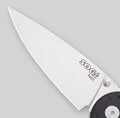
-
Drop Point
Drop Point is a pattern used on many knives, commonly seen on hunting blades. The tip is lowered (dropped) via a convex arc from the spine to allow the tip to be ground thicker. This convex shape differentiates it from the clip point.
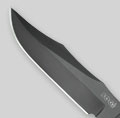
-
Clip Point
Clip Point is a great all-around format and one of the most popular, used on most bowie knives. The blade shape uses a concave or straight cutout toward the tip.
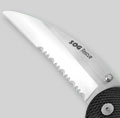
-
Sheepsfoot
Sheepsfoot blades really can't be said to have a point, because the spine curves down to meet with the straight edge. They can be safely used as a rescue knife or in situations that don't require a point.
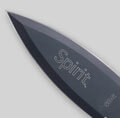
-
Spear Point
Spear Point is a symmetrical grind with the tip located at the blade's center. Double-edged, the spear point shape makes for a great dagger.
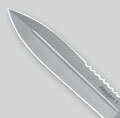
-
dagger
Dagger is the format designed to maximize piercing. The dagger usually features two sharp edges to reduce the profile and let the knife cut on both sides. It is also symmetrical but can vary to a finer edge than the spear point.
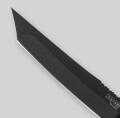
-
tanto
Tanto has become identifiable for its angular shape, using two straight edges that are joined. The Tanto tip is very strong due to the spine keeping its full width until it nears the tip, which then tapers to create the point.
Edge Types

-
Straight
Straight Edge blades are the standard for general knives and cutlery. The ideal choice for hunting, the Straight Edge provides an edge that cuts cleanly and sharpens quickly and easily.

-
Fully Serrated
Fully Serrated blades remarkably outperform straight edges when cutting fibrous material, like rope. It is an aggressive edge and often leaves a ragged cut. Serrations typically will stay sharp longer than a straight edge but once dull, are much more difficult to sharpen. However, there are many systems today that make sharpening serrations easier.

-
Serrated
Partially Serrated blades offer the advantages of both straight and serrated edges in one knife blade. A partially serrated edge is a good compromise when the blade will be used for general purposes.
Finish and Coating
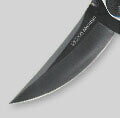
-
TiNi is short for Titanium Nitride. By far the best coating that can be applied to steel, it is commonly used for black finishes and to increase durability. The TiNi finish is known to be both extremely scratch and peel resistant, and is applied to steel through a unique process of plasma deposition performed in a complete air-sealed vacuum.
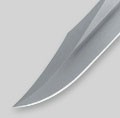
-
Satin Finish is a semi-shiny finish with a luster falling between bead blasted (matte) and mirror polish (high gloss). The most popular finish on production knife blades, it shows fine buffing lines with two directional finishes that better display the bevels of a blade. This requires great hand skill to accomplish.
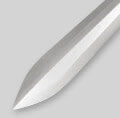
-
Mirror Polish is a highly reflective finish typically seen only on high-end, custom, and handmade knives. Besides being incredibly striking visually, mirror polished finishes also aid in corrosion resistance due to their smooth surface. Some lower end knives use a tumbled finish to approximate a high-end mirror polish.
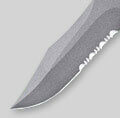
-
Bead Blasting is a non-reflective finish created by blasting the surface of a blade with various media - usually beads or sand - producing a rougher surface more prone to surface corrosion.
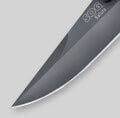
-
Black Oxide, or blackening, is a conversion coating for ferrous materials that is used to add mild corrosion resistance and for an appealing black appearance.
Black Paint, or powder coating, is the lowest quality blade coating. The paint gives the blade low reflectivity but has a high probability of chipping and scratching.
Blade Size Considerations
Though usually a matter of personal preference, blade size should be determined by the job for which it is intended and the way you plan to carry your knife. Typically, larger blades are used for outdoor and other heavy-duty applications, while smaller blades are appropriate for everyday tasks. Note: Prior to purchasing a knife, it is a good practice to check the laws in your state or country regarding legal blade sizes and lengths.
Technologies

-
CPM S35VN
CPM-S35VN is a USA-made steel known to offer improved toughness, better edge retention, higher resistance to wear and edge chipping while maintaining ease of sharpening.

-
S30V

-
Cryogenic Heat Treatment

-
SOG Assisted Technology ™

-
The Arc-Lock ™

-
Compound Leverage ™
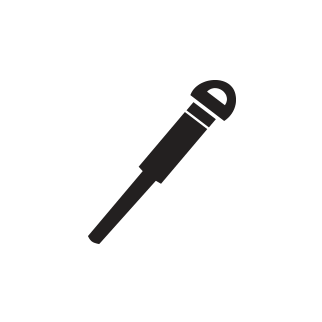
-
Sharpening Rod in Handle
Unscrew the carbide sharpener in the back of the handle.
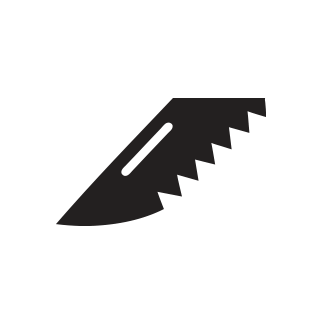
-
Double Tooth Saw - Rotating Blade
SOG's Double Tooth Saw design is truly cutting edge! The alternating tooth design allows the saw to grip while at the same time reducing friction for optimal performance. No outdoorsman should go into the wild without it!

-
Saw Back
Equipped with a real working saw on the back of the blades with teeth that cut deep.
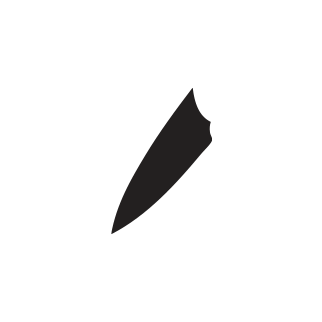
-
San Mai Stainless Steel
San mai means layered steel. It contains a very hard core steel that is encased in softer more resilient outer layers, Its advantages are in having a blade with an extremely hard edge but that can be flexible as well. There are many combinations of steel used in san mai.

-
Automatic
Equipped with a folding or sliding blade contained in the handle which is opened automatically by a spring when a button, lever, or switch on the handle or bolster is activated.

-
VG-10
VG-10 is well-known high-end Japanese steel and is considered premium. It contains vanadium which is known for its toughness. The steel is specially designed for high-quality blades used in cutlery. VG-10 can be sharpened to a fine edge that is very durable. It can maintain a hardness of Rc 60 without becoming brittle.

